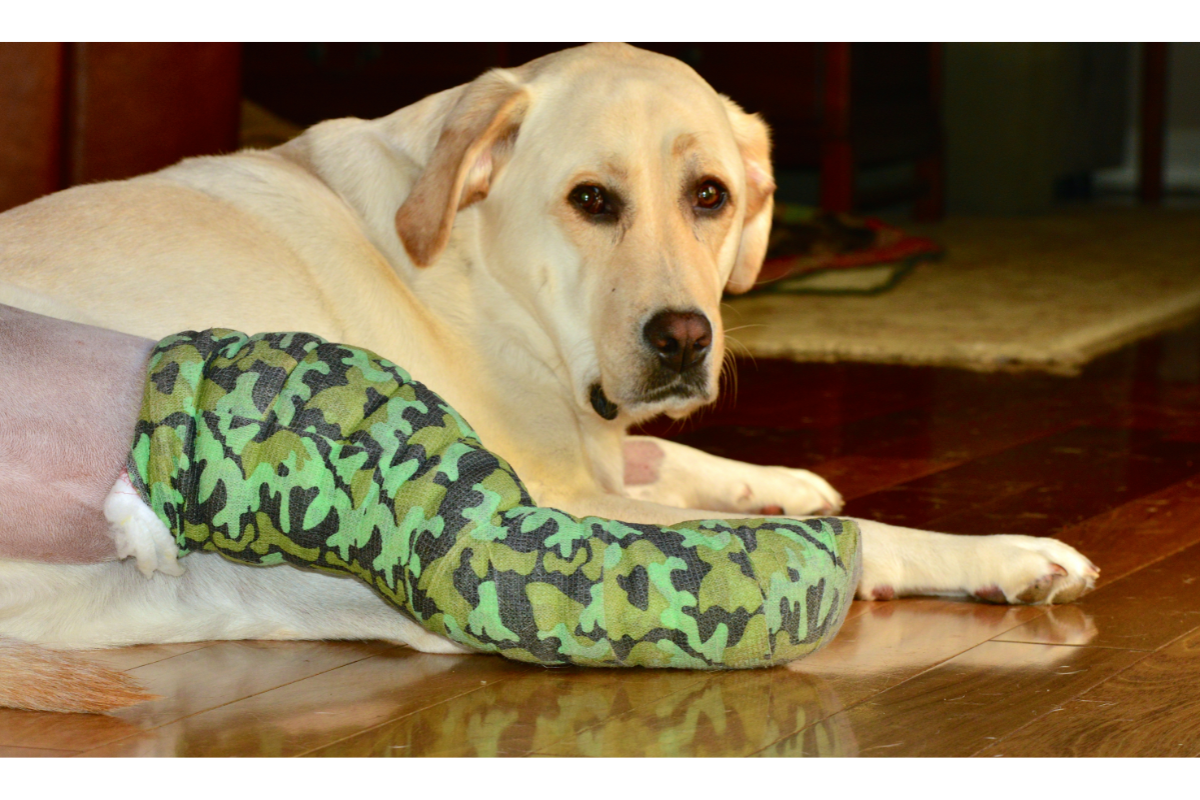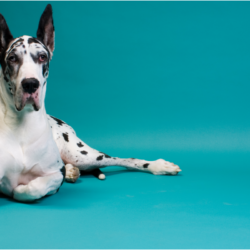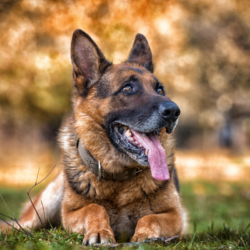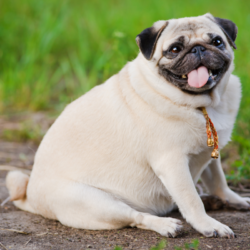Cruciate ligament rupture in dogs is a common condition that can seriously affect your pet’s mobility. The cruciate ligaments, located in the knee joint, play an essential role in stabilising the knee and coordinating movement. When these ligaments rupture, your dog may experience intense pain and a pronounced limp.
What causes this condition?
The dog’s knee, also known as the stifle, is made up of four main ligaments: two collateral and two cruciate. The cruciate ligaments, named anterior and posterior according to their respective attachment to the tibia, cross in the centre of the joint formed by the femur and tibia. The anterior cruciate ligament (ACL) plays a crucial role in limiting the advance of the tibia during weight-bearing. However, only 20% of ACL ruptures are attributable to trauma. The actual causes of rupture are not fully understood, but several predisposing factors have been identified.
Labradors, Rottweilers and Newfoundlands have an increased risk of cruciate ligament rupture. This risk is 3 to 7 times higher than in other breeds. Traumatic ruptures generally occur as a result of abrupt weight-bearing combined with excessive rotation, similar to injuries seen in human athletes. Hunting dogs, working dogs and those involved in intense activity are particularly vulnerable. Chronic partial ruptures, on the other hand, result from progressive degradation of the ligaments, often favoured by a specific conformation of the stifle, a steep slope of the tibial plateau, and other factors such as obesity and inflammation.
What are the symptoms of cruciate ligament rupture?
Rupture of the anterior cruciate ligament causes lameness in the hind limb. Clinical signs vary depending on the origin of the rupture. A traumatic rupture manifests itself as acute and severe lameness with loss of weight-bearing. A partial rupture, on the other hand, is characterised by insidious, progressive lameness, often more marked after rest or exercise. Owners may notice increased tiredness without identifying a frank lameness.
When the rupture is bilateral, signs include weight transfer to the forelimbs, a hunched back, and difficulty standing up or jumping. Symptoms can be subtle and require clinical expertise to diagnose. Dogs may show swelling around the knee, stiffened thigh muscles, and a leg held extended when sitting. Other signs include difficulty rising from a sitting position, difficulty jumping into the car, decreased activity level, variable severity of lameness, muscle atrophy, decreased range of motion of the knee joint, and sometimes a popping sound indicative of a meniscal tear.
How is it diagnosed?
The diagnosis of cruciate ligament rupture is based primarily on a physical examination of the knee during a veterinary consultation. The presence of swelling and instability in the knee, if unambiguous, is often enough to establish the diagnosis. The vet will handle the dog to look for the drawer sign, an abnormal protrusion of the tibia in relation to the femur. This test is sometimes made easier by tranquillising the dog.
X-rays are an essential tool for assessing the extent of osteoarthritis, the conformation of the stifle and the slope of the tibial plateau. Although MRI and CT scans are rarely necessary, they can be used in cases of persistent doubt. Arthroscopic examination may also be considered to visualise the internal structures of the knee. In consultation, the vet may also feel a “ball” on the inside of the knee, a sign of joint thickening. Loss of muscle mass on the affected limb is an indicator of chronic damage.
What treatments are available?
Surgery is often recommended to treat cruciate ligament rupture in dogs. Several surgical techniques are available, aimed at restoring knee stability. Conventional techniques use prostheses to replace the deficient ligament, while osseous techniques, such as tibial osteotomy, alter the geometry of the upper part of the tibia to neutralise tibial thrust.
Post-surgical convalescence involves strict rest for 8 weeks, with limited outings on a lead. Functional rehabilitation, particularly hydrotherapy, is crucial to optimum recovery. Post-operative care and veterinary monitoring are essential to ensure recovery. Although medical treatments can offer temporary relief, they do not prevent osteoarthritis from setting in. Weight management and hydrotherapy are beneficial in improving patient comfort.
What are the natural alternatives?
Natural alternatives for the management of cruciate ligament rupture in dogs focus mainly on physiotherapy and the use of natural remedies to reduce pain and improve joint function.
Physiotherapy
Physiotherapy is a proven method of treating knee instability due to cruciate ligament rupture. Several clinical studies have demonstrated its effectiveness. The main aims of physiotherapy include
- Combating pain and improving joint trophicity to limit the progression of osteoarthritis.
- Muscle strengthening to tone and stabilise the joint.
- Proprioceptive re-education to improve coordination and stability.
Physiotherapy can be used as a conservative treatment, particularly in small, non-sporting breeds. Techniques include the application of cold to reduce inflammation, passive mobilisation to limit the formation of scar adhesions, and joint stabilisation exercises. Resuming weight-bearing as soon as possible is crucial to optimal recovery.
Essential oils
Essential oils offer a natural alternative for relieving the pain and inflammation associated with cruciate ligament rupture. An effective blend includes :
- Sweet wintergreen (120 drops): known for its powerful anti-inflammatory and analgesic properties, it contains methyl salicylate, a compound similar to aspirin.
- Rosemary Camphor (60 drops): renowned for its stimulant and anti-inflammatory effects, it helps to improve blood circulation and reduce joint pain.
- Savory Thyme (30 drops): has antiseptic and anti-inflammatory properties, helping to prevent infections and reduce local inflammation.
- Italian Helichrysum (90 drops): promotes tissue regeneration and has anti-haematoma, anti-inflammatory and healing properties.
- Macadamia vegetable oil (10 ml): used as a base oil, it is easily absorbed by the skin and has moisturising and anti-inflammatory properties.
This mixture should be applied locally to the affected area for an anti-inflammatory and analgesic effect.
Gemmotherapy
Gemmotherapy uses bud extracts for their therapeutic properties. The following bud macerates are particularly beneficial:
- Blackcurrant: Blackcurrant bud macerate is a powerful anti-inflammatory and toxin drainer. It stimulates the adrenal glands, helping to reduce inflammation and pain.
- Scots Pine: This macerate regenerates cartilage, helping to strengthen joint tissues and improve their resilience.
- Vine: Used for its anti-inflammatory properties specific to joints, it helps to reduce chronic inflammation and improve joint mobility.
These extracts can be administered for prolonged action against inflammation and to support joint tissue regeneration.





